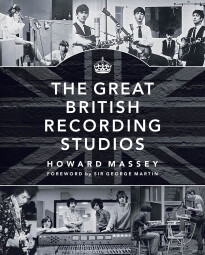In the early 1960s, at the beginning of the British Invasion, the studio scene in England was thriving, but the British studios used different gear and got a very different sound than their U.S. counterparts. In recent times, most of the major British recording studios have closed, and for a time, it looked like much of their history was in danger of disappearing, too.
In 2010, music journalist Howard Massey was approached by Malcolm Atkin from the Association of Professional Recording Services, a British studio trade group that was headed at the time by Sir George Martin. Atkin asked Massey to write a book documenting the British studio scene of the ‘60s and ‘70s, in order to document that very important era of recording. (Martin ended up writing the book’s foreward.)
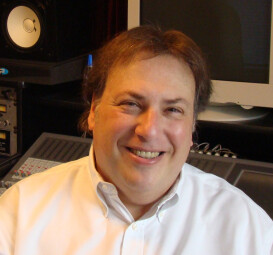
Massey agreed, and spent the next five years researching the book. The result was The Great British Recording Studios (2015, Hal Leonard Books), a fascinating read for any fan of recording. It looks at the major British studios during those decades, including who recorded in them, what gear they used, who the engineers were, and more.
Audiofanzine had a chance to talk to Massey and delve into the world of British recording in the golden years.
The book goes into great detail about the studios, including their engineers and gear collections. How did you get all that information?
Well, it was an enormous research project. I kind of think of it now as the world’s longest term paper. I was given access to the APRS archives, all the major studios were members and as part of membership they had to submit their equipment listings. So I had access to that, and also, there was an APRS directory that was published every year in which most studios took ads and listed their equipment. So I was able to track the changes through the years. And then, tons of online sources, and there were annual Billboard listings in England of studios. So basically, it was a lot of putting pieces together. But the material was sourced from the studios themselves. It was not third-party, or estimates. It was all actual hard facts and figures I was able to find sources for.
Did you interview lots of people, as well?
I interviewed over 300 people.
Did you spend a lot of time over there doing this?
I made five trips to England over the course of the five years.
Because of the Beatles, we’ve heard a lot about EMI Studios (now Abbey Road Studios), but Olympic and Trident were the other two really big ones back then, right?
Yes, I would say. Along with Decca. Decca was probably a little more well known for classical recordings, but the Decca complex was actually bigger than the EMI complex. It was actually larger.
And Decca is where they invented the Decca Tree stereo-miking technique?
Exactly. That was one of the key technical innovations. Of course, EMI was responsible for the Blumlein pair, which is kind of the counterpart. But in terms of pop, EMI, Trident and Olympic were the big three. The Who did a lot of recording at IBC, that was another big studio. And there were a few of them, the prog-rock bands like Yes and ELP tended to work at Advision, another key facility. And then there was a very, very large film-scoring facility called Delane Lea CTS, where almost all the James Bond films were scored, the blockbuster James Bond films out of the '60s were recorded there.
Was Olympic where the Stones recorded most of their stuff?
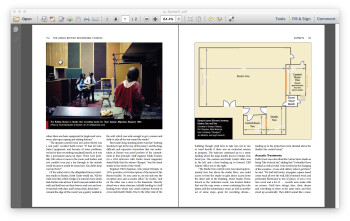
They did three albums at Olympic, and after that they developed the Rolling Stones Mobile, which is included in the mobile chapter at the end. And they would record in Nellcote, Keith Richards’ mansion in Southern France, or Mick Jagger’s Stargroves in Southern England. So they would record wherever, and they’d bring their truck with them.
Wasn’t it Led Zeppelin IV that was recorded at house with a mobile setup?
Most Led Zeppelin albums have tracks that were done with a mobile, that were done remotely.
Was that kind of mobile technology more of a British thing originally?
Well, it’s interesting. I didn’t do any research into the U.S., but as far as I know, the modern concept of mobile recording, where the truck is a control room on wheels — that was an innovation of the Rolling Stones. The Rolling Stones mobile was the first time that occurred, I believe. There was location recording as far back as the early 1920's in England. What they’d do is they’d load these trucks up with huge amounts of gear, packed in wooden crates, and they’d schlep all the stuff into the venue and setup a little control room in a dressing room somewhere. And at the end of the night they’d carry everything back out to the truck.
That’s a lot of work.
The Rolling Stones mobile was the first time somebody came up with the idea. The thinking was: “Why do we need to keep hauling the stuff in and out? Why do we need to setup a control room in some crappy acoustic space where we don’t know what we’re hearing? Why don’t we use the truck itself as the control room?” And so the only thing that gets moved in and out are the microphones and mic stands. Everything else is permanently installed on the truck. That was an innovation of a fellow named Ian Stewart. He was the Rolling Stone’s tour manager and actually was the group’s co-founder. And apparently, he’s the one that came up with that idea. After that, of course, everybody followed suit, because it made perfect sense.
There were those three big studios, but there were still a lot of other smaller places, right?
Oh yeah. In the '60s, there were dozens and dozens of studios around England. England’s not a very big country, geographically. Unfortunately, of the 36 studios covered in the book, only four of them are still in business today.
I know that EMI is still running, although there were rumors of them getting sold. What about the other big ones?
All the other big ones are gone. The only four that are remaining are EMI, RAK, a residential studio out in Cornwall called Sawmills, and there’s a facility called Air-Edel that’s on the grounds of what was the old Star Sound, Audio International.
You mention in the book, and I find this very interesting, that prior to the '60s when more British companies were starting to make tape machines and consoles, a lot of the consoles were home made by the studios.
Yeah, almost all of the consoles were made in-house by the maintenance staff. The only exception was the small studio opened by Phillips, which initially had a Neumann console, and then replaced it with one of the very first Neve solid-state consoles.
Why did it happen this way? Was it just that the British studios didn’t have access to the gear that the American studios did?
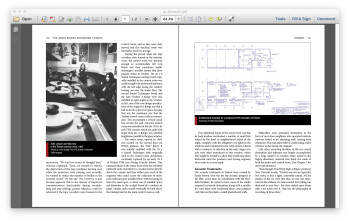
They didn’t have access to it, and they didn’t have knowledge about it. And the four major [British] studios were owned by very large, sort of scientific instrument companies. And the recording studios were like almost the smallest part of their business. They employed technicians in workshops that built radar and sonar and things like that for the war effort. So for them, putting together an audio console was really easy. They’d been involved in much more exacting technologies than that. So they had the staff, they had the training, and they kind of made it up as they went along, and improved it over the years. Each EMI console that came out was an improvement over the previous ones and it had more features and better fidelity. The same was true with Decca and with Pye. Those three companies in particular were scientific manufacturers of TV sets, sonar, radar, all kinds of heavy duty equipment that was used during the war. And Phillips, of course was owned by Siemens in the Netherlands. They were the exception in that they didn’t build their own consoles. But they did a lot of custom work.
Since there wasn’t a lot of standardization, an engineer must have had to understand how a particular console was designed in order to get around on it.
Yeah, an engineer who trained in one facility would really kind of be at sea if they went to another one. But they didn’t move around from facility to facility. It was not until the mid to late '60s. It was kind of like you had a job for life. If you worked at Decca there was no way that you were going to be moving over to EMI, it was just not done. Similarly, you didn’t know anything about the other facilities gear — these were considered very carefully guarded trade secrets.
I know from reading a lot about EMI that, at least there, they had a very scientific, stuffy view of recording, and the engineers wore lab coats and all that. Was that typical at British studios, or was that an EMI quirk?
EMI was probably the most staid of all of them, but that was typical, up until the opening of Trident in 1968. Trident was really the first studio that was artist friendly, and was concerned with artist comfort. In most studios, recording engineers had to wear jackets and ties. The lab coats thing wasn’t just a stuffy thing, it actually had a practical origin. It dated back to when they used to record on wax cylinders. And the practical application was just keeping their clothes from getting all filthy. But, yeah, the recording engineers had to wear jackets and ties and that was just sort of an English thing. There wasn’t the kind of casual sense that there was in American studios. That didn’t start happening until the late '60s.
It amazes that the Beatles, even in their heyday, had trouble convincing EMI to let them experiment with recording techniques. Was that kind of conservatism about recording techniques true at the other studios?
Yeah, there were prescribed ways of doing things, and experimentation was generally frowned upon. A really good example, is Joe Meek. He was a perfect example, because he started out at IBC [Studios] and he was very unorthodox and very radical in his approach. He faced enormous resistance, and he ended up quitting or asking to leave, I’m not sure which, but he was ostracized on many fronts. Not just because of his personal eccentricities, but because he would tinker with the equipment and he would do things differently, and everybody else was just aghast. Then he joined forces with a producer, Dennis Preston, to form Lansdowne studios, and he was sort of the chief engineer and co-director. And even then, he ended up leaving. He just came to the conclusion that the only person he could work for was himself.
So what did he do?
He setup what became the world’s first home studio, or certainly the first one in England, and did it his own way. He lived in chaos. There were bare wires everywhere, and tapeboxes strewn all over the place. It was what they call a “flat.” It was a three-storey apartment over a handbag shop, which he then converted into a kind of makeshift home recording studio, with very little acoustic treatment, and almost all hand-built equipment that he used in unorthodox ways. He was a huge fan of distortion, for example. And he produced some great records and made some great equipment, despite everything.
What were his biggest innovations?
Creative use of distortion. Creative use of over-compression. And he figured out ways of getting a big sound out of a very small room, with judicious applications of enormous amounts of reverb. Customized reverb and customized compressors that would sort of tinker with and tweak. Nobody was ever sure exactly what he was doing, but he always had a soldering iron out, he was always changing things. This made him impossible to work with at standard studios. He was an eccentric, he was a mad genius.
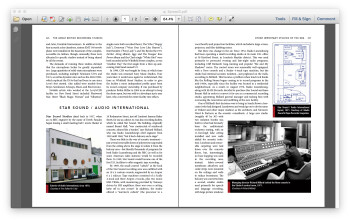
Back to the differences between American and English studios: From what you know, the attitude at the American studios was different in terms of trying innovative techniques, or is that overstating it?
No. I think the American studios had their ways of doing things and the English studios had theirs. The differences came down to not just different equipment and different recording techniques, but also cultural differences like the engineers in England grew up listening to very different music than the American engineers did. There were different musical traditions in England, things like skiffle and music hall, and things that we never ever were exposed to in the United States. And similarly, there was very little exposure in England to jazz or the blues, before the '60s. And the other thing that’s interesting is that the musicians were quite different, in a similar way.
How were they different?
One of the most interesting stories to me, and I hear this repeatedly from many engineers in England who were constantly being asked by their clients to come up with an “American” drum sound, quote unquote. And they’d listen to American records, and they’d try their hardest to do it, and to a man, they all told me the same thing: They could not accomplish it. It was completely impossible unless there was an American drummer on the session. So it wasn’t so much down to the equipment, or the recording techniques, or how you placed the microphones or adjusted the EQs. It was down the guys behind the kit. They all said, the moment there was an American drummer on the session, all they had to do was lift up the faders and the sound was there. It was in the feel of the musician.
Of course, there were numerous attempts by the British musicians to try to cop the American blues sound.
Absolutely. And when they failed, which they did, they came up with their own sound, and that was kind of the root of it.
What were the biggest differences between the American and British sounds from an audio standpoint?
It’s interesting. When I’m doing the live presentations that I was doing over in the U.K., I actually play records back to back. I play a Beatles record back to back with a Four Seasons record. I play a Motown record back to back with a Who record. And when you hear them next to each other like that, it’s absolutely apparent. American records were much smoother, much more polished, had much more low end. The British records coming out of studios in that era were much toppier, much rougher. They had much more reverb. It’s an eye opener when you listen to them back to back through the same system.
What accounts for the difference, say in the high end?
A lot of that had to do with the monitoring. British studios almost exclusively used Tannoy monitors and Lockwood cabinets, which yielded huge amounts of low end. So they would compensate in the mixes and add lots of high end. And the reverse was happening in the American studios, which almost always used Altec 604s hung on chains in utility cabinets. They were very toppy, they had very little low end. So they’d pile on the low end.
What were the biggest technical innovations to come out of the British studios at that time?
There were a million of them. The first DI box was invented there.
That was EMI, right?
Yes, EMI, the great Ken Townsend who also invented ADT — Automatic Double Tracking. Some of the acoustic designs were absolutely innovative. There were these hanging sound-disbursement spheres that were used in some of the British studios. The Joe Meek compressor, and certainly the mixing consoles. The EMI mixing console, Neve consoles, they’re revered with good reason. They had a different kind of sound than American consoles.
What songs would be good for the readers to link to in order to compare the British and American sounds?
I can tell you the six that I use in the presentation that I do. I picked them not just for the sake of being great examples, but these were records that were in the top 10 at the same time. So I start with “Walk Like a Man” by the Four Seasons. That was a #1 single in the U.S. in March 1963. And at the same time, the #1 single in England was “Please Please Me” by the Beatles. Listen to those back to back. About a year later “I Get Around” by the Beach Boys was #1 in America, and at the same time, “House of the Rising Sun, ” by the Animals was #1 in England. And then in 1965, the US charts were topped by “I Hear a Symphony” by the Supremes, a very classic Motown track. And at the same time in England, the #1 hit was “My Generation” by the Who. That’s kind of mind boggling hearing them side by side.

